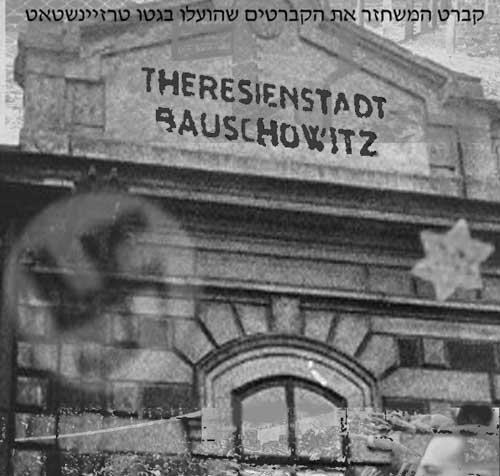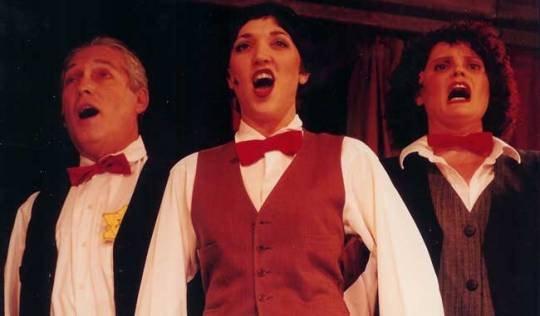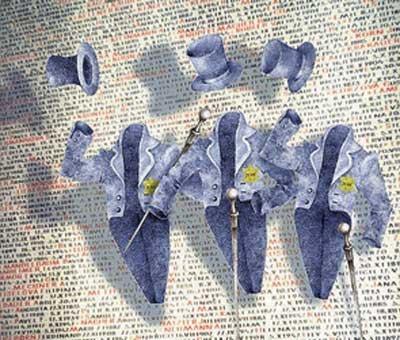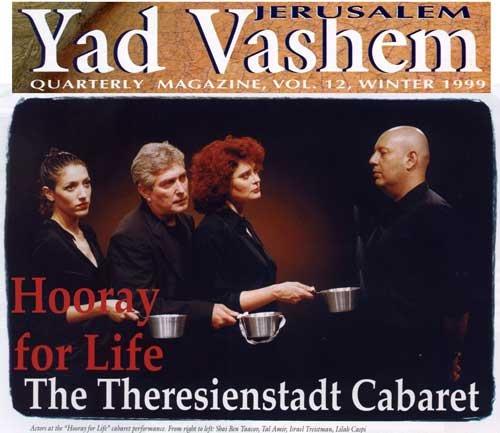לחיי החיים
קברט המשחזר את הקברטים שהועלו בגטו טרזיינשטאט בין השנים 1942-1944
החומר, המורכב משירים ומקטעי משחק, מציג את הסיפור וההווי של טרזין כפי שהשתקף על הבמות המחתרתיות בגטו, והוא מוגש מזווית מחויכת וצינית, כמו זו שנולדה במציאות הנוראה של המקום ההוא. העובדה ששם, בגהינום, הצליחו אנשים לחייך ואפילו לצחוק, מעידה על יצר חיים שקשה לנו להבין אותו ומעוררת כבוד והערכה.
באמצעות ההומור השחור, שנולד במציאות של הגטו, נפרש בפנינו סיפור גטוטרזין, למן הקמתו בראשית 1942 ועד התרמית הגדולה שנערכה בפני אנשי הצלב האדום בקיץ 1944. כל זה בצל הטרנספורטים היוצאים למזרח, חיי הסבל, המחלות,הפחד, הרעב והמוות – לצד "חיים כאילו" (מושג שנולד שם): חיי תרבות ויצירה עשירים, הרצאות, עיתונים סאטיריים המופעים בעותק אחד, עיתוני ילדים, ליגה לכדורגל של הגטו, ואפילו בית קפה ותזמורת, וכמובן הצגות הקברט במיטב המסורת הגרמנית-האוסטרית או בדרך הקברט הצ'כי הצעיר והמרדן. כל זה, עד לשחרור טרזיינשטאט בידי הצבא האדום ב-1 במאי 1945.
את ההצגה כתב קובי לוריא. השירים המקוריים, שרובם נכתבו בגרמנית ומיעוטם בצ'כית, נשתמרו ותורגמו. חלק מהמנגינות שרדו. חלקן נכתבו מחדש.
הרוח החיה בקברטים של טריינשטאט היה קארל שוונק, צעיר ממוצא צ'כי, שמצא את מותו במחנה עבודות כפייה בגרמניה, ממש לקראת תום המלחמה. אחת מהצגות הקברט שלו נקראה "לחיי החיים". מתוך כבוד ולשם הנצחת פועלו של קארל שוונק, בחרנו בשם זה גם למופע שלנו.
ההצגה הועלתה בפסטיבל עכו בסוכות, אוקטובר 98 בהצלחה רבה, זכתה לביקורות נפלאות ולציון לשבח בפסטיבל הן להצגה והן למוסיקה.
כתיבה ועריכה:
בימוי וכוריאוגרפיה:
ניהול מוסיקלי:
משתתפים:
פסנתר:
סייעו בתחקיר:
קובי לוריא
ישראל גוריון
חנה כהן
ישראל טרייסטמן, טל אמיר ולילך כספי
שי בן-יעקב
רות בונדי, אנשי בית טרזין בגבעת חיים וד"ר דוד בלוך
כתבה שפורסמה אודות ההצגה בכתב העת של יד ושם:
Hooray for Life - By Galia Limor
Any association between the Holocaust, on the one hand, and cabaret and satire, on the other, may sound grotesque and offensive, but, the cabaret "Hooray for Life," on stage at Yad Vashem in January, reveals a unique and fascinating link between them. The cabaret is a collection of songs and sketches depicting life in the Theresienstadt ghetto. In addition to the ongoing commentary, which enriches the audience's knowledge about the history of the ghetto, the songs and sketches shed new light on life in Theresienstadt.
Thus, for example, the cabaret begins with an explanation about the ghetto. An actress greets the audience and points out that they are very lucky to visit such an impressive place, where, she is sure, they will enjoy themselves. Following a discussion of the building style of the Theresienstadt fortress and admiration for the lovely and idyllic Czech countryside, she promises, "Ah, this view and this vacation is something you will not quickly forget." The opening march then begins:
Empress Maria Theresa
Did a mighty fortress design,
That no enemy could assail,
That no army could surprise.
And after a few verses:
Suddenly something strange occurred,
Something quite insane,
Of all people - it was the Jews that did the fortress assail,
Without arms or even a fight.
The play is based on texts from cabarets produced in the Theresienstadt ghetto. Kobi Luria wrote and edited the play. Ruth Bondi, herself a survivor of the Theresienstadt ghetto and Auschwitz, and other survivors helped him collect the selections which serve as the basis for the performance. Israel Gurion directed the play and Hannah HaCohen was the musical director. Kobi Luria also translated some of the songs; other songs were already translated in the past by Lea Goldberg and Shimon Lev-Ari. Leo Strauss - son of the King of the Viennese operetta, Oscar Strauss - composed some of the melodies which accompany the texts and which were played by the pianist Shai Ben Yaacov. Many of the authors of the original texts upon which the play is based perished in the Holocaust.
The songs and sketches portray the way people lived in Theresienstadt, as reflected on the stages of the ghetto underground. The cabarets were born in the terrible reality of the ghetto, but they offer a different and surprising angle, life in the ghetto with a smile and with humor. “When the smile is recalled,” says Luria, “the survivors I met felt that their dignity had been restored to them. Creating black humor and art under those circumstances took much courage.”
A description of life in the camp in one of the verses of “The Invitation”:
Every problem here is solved,
Worries, concern - they disappear.
Just one small question nags,
How do we get out of here?
“I laugh, therefore I am,” wrote cabaret artist Karel Shvenk, whose character is portrayed in the play. His statement is perhaps the essence of the camp inmates' world-view. They wrote songs and sang them. They held on to life, unbearable as it was, but never stopped creating wonderful art. They kept on laughing until the final moments of their lives.
Parts of the play reflect the fact that the original authors had no qualms about poking fun at themselves. Thus, for example, the song “A Theater Ticket” describes the passion for culture in Theresienstadt. One inmate loved opera so much that he was willing to undergo trials and tribulations to get opera tickets. Finally, after failing to do so, he ended up in a mental institution.
In another song, the audience becomes acquainted with the events in Lidice, the village whose inhabitants were executed in retribution for the murder of Heidrich. They were buried by inmates of Theresienstadt “who were led there and came back with the flock.” Another song tells the story of a small lonely suitcase from Frankfurt, worried about its old blind owner, from whom it has been separated.
One of the final songs “Carousel” was considered one of the most successful ever-staged in Theresienstadt. It describes a ride on a wooden horse in a circle that leads to nowhere but turns into a unique journey of its own. It is an allegory of life in the camp, and perhaps an allegory of the very essence of Theresienstadt itself.
The finale, written by Dagmar Hilrobe and composed by Hanna Cohen, is called “May,” the month in which the inmates of Theresienstadt were liberated. It is a paean to freedom.
The play's actors, Tal Amir, Israel Treistman and Lilach Kaspi, must contend with challenging and complex material. Through their talents and the talents of the other artists and participants in the play, the art of Theresienstadt continues to live on, even though, almost all of those involved in the writing of the original text, perished in the Holocaust.
“I was very moved to see native Israelis take up this subject, so difficult for me and for them, and treat it with respect and dignity I hope that through its humor, the play will speak to the generations who did not experience the Holocaust,” says Ruth Bondi.




